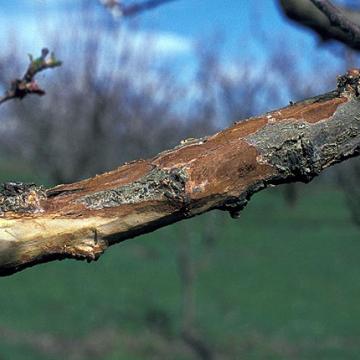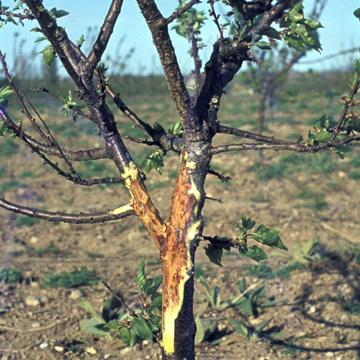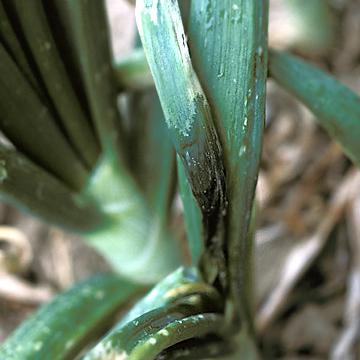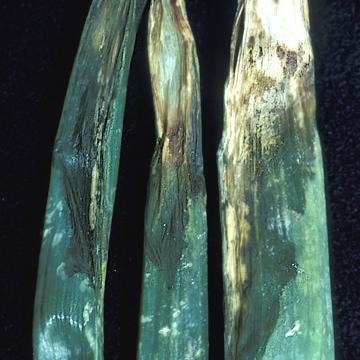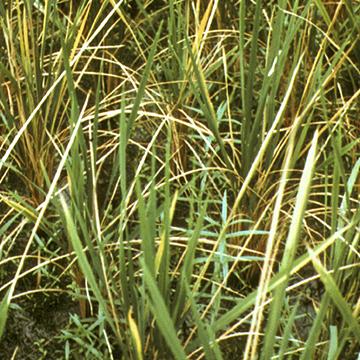DISEASE: Bacterial canker and blast
HOST: Apricot
Apricot with typical reddish brown-discolored tissues beneath the bark and gumming around infected areas.

Bacterial canker and blast | Apricot
DISEASE: Bacterial canker and blast
HOST: Apricot (Prunus armeniaca)
PATHOGEN: Pseudomonas syringae pv. syringae
SOURCE: S. Sampson, M. Shurtleff
DISEASE: Bacterial canker and blast
HOST: Apricot
Young infected twig with droplets of bacterial ooze on stem.
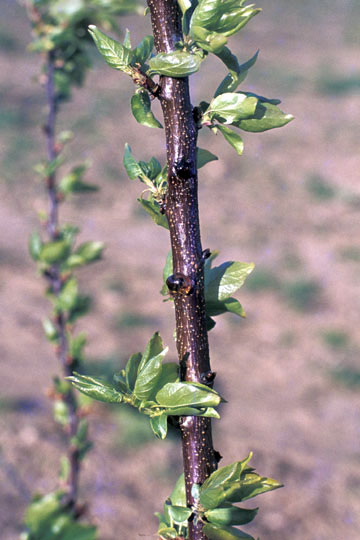
Bacterial canker and blast | Apricot
DISEASE: Bacterial canker and blast
HOST: Apricot (Prunus armeniaca 'Moorpark')
PATHOGEN: Pseudomonas syringae pv. syringae
SOURCE: J. Young
DISEASE: Bacterial canker and blast
HOST: Apricot
Bacterial canker has many symptoms. Typical symptoms are brown, sometimes reddish brown, internal tissues and rough, cracked bark.
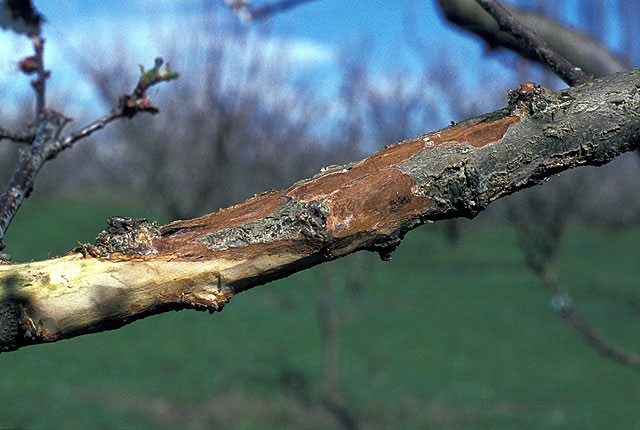
Bacterial canker and blast | Apricot
DISEASE: Bacterial canker and blast
HOST: Apricot (Prunus armeniaca 'Moorpark')
PATHOGEN: Pseudomonas syringae pv. syringae
SOURCE: J. Young
DISEASE: Bacterial canker and blast
HOST: Apricot
Infected apricot with sparse foliage (some twigs with no foliage) and a discolored area exposed where bark was removed.
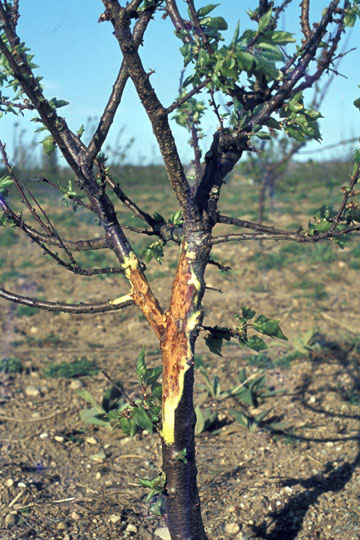
Bacterial canker and blast | Apricot
DISEASE: Bacterial canker and blast
HOST: Apricot (Prunus armeniaca 'Moorpark')
PATHOGEN: Pseudomonas syringae pv. syringae
SOURCE: J. Young
DISEASE: Bacterial canker and blast
HOST: Apricot
Fruit spot phase with numerous reddish necrotic spots.

Bacterial canker and blast | Apricot
DISEASE: Bacterial canker and blast
HOST: Apricot (Prunus armeniaca 'Moorpark')
PATHOGEN: Pseudomonas syringae pv. syringae
SOURCE: J. Young
DISEASE: Bacterial flower stalk and leaf necrosis
HOST: Onion
Dark, rotted areas of stalk and leaves caused by systemic invasion of the pathogen.
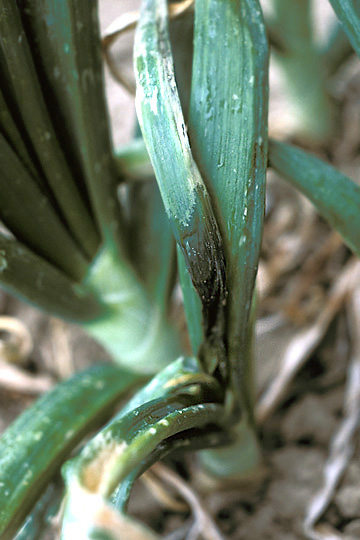
Bacterial flower stalk and leaf necrosis | Onion
DISEASE: Bacterial flower stalk and leaf necrosis
HOST: Onion (Allium cepa)
PATHOGEN: Pseudomonas marginalis pv. marginalis
SOURCE: S. Mohan
DISEASE: Bacterial flower stalk and leaf necrosis
HOST: Onion
Gray-brown rot of onion after inoculation. Disease starts as small, water-soaked lesions that later develop into slimy, gray-brown rot. The disease progresses downward from the stalk and may rot the entire bulb.
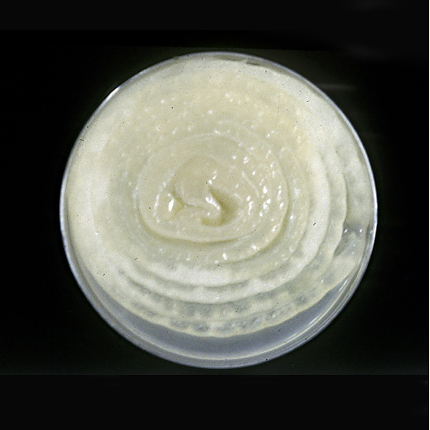
Bacterial flower stalk and leaf necrosis | Onion
DISEASE: Bacterial flower stalk and leaf necrosis
HOST: Onion (Allium cepa)
PATHOGEN: Pseudomonas marginalis pv. marginalis
SOURCE: R. Gitaitis
DISEASE: Bacterial flower stalk and leaf necrosis
HOST: Onion
Leaves with necrosis and rot. The common name for this disease is the same as those used for two other diseases. Also, another common name for this disease is bacterial soft rot.
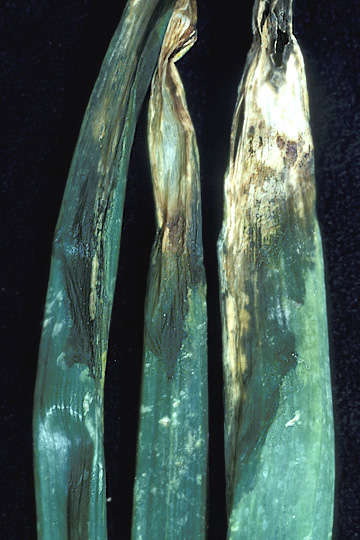
Bacterial flower stalk and leaf necrosis | Onion
DISEASE: Bacterial flower stalk and leaf necrosis
HOST: Onion (Allium cepa)
PATHOGEN: Pseudomonas marginalis pv. marginalis
SOURCE: S. Mohan
DISEASE: Bacterial foot rot
HOST: Rice
The disease causes sheaths to turn dark brown and rot; dead leaves droop. Nodes, culms, and crowns also decay, and infected tillers are easily detached from the crown. Culms and internodes turn black.

Bacterial foot rot | Rice
DISEASE: Bacterial foot rot
HOST: Rice (Oryza sativa)
PATHOGEN: Dickeya zeae
PATHOGEN SYNONYM: Erwinia chrysanthemi pv. zeae
SOURCE: M. Goto




